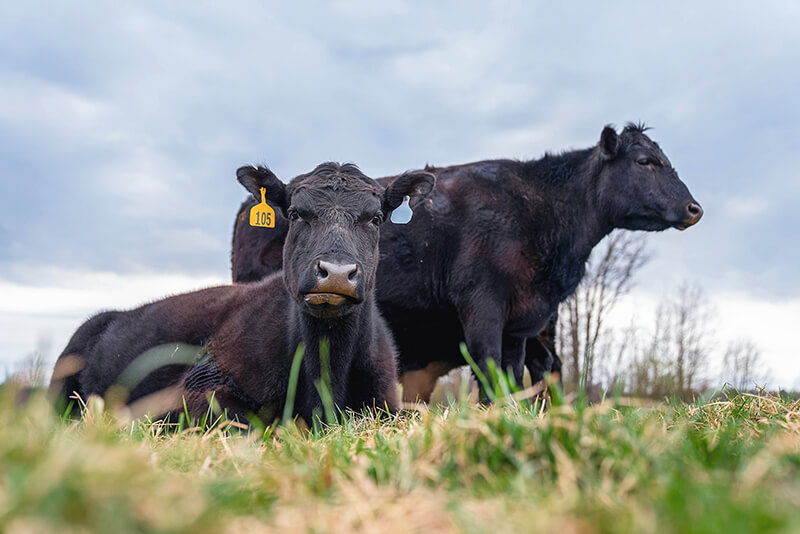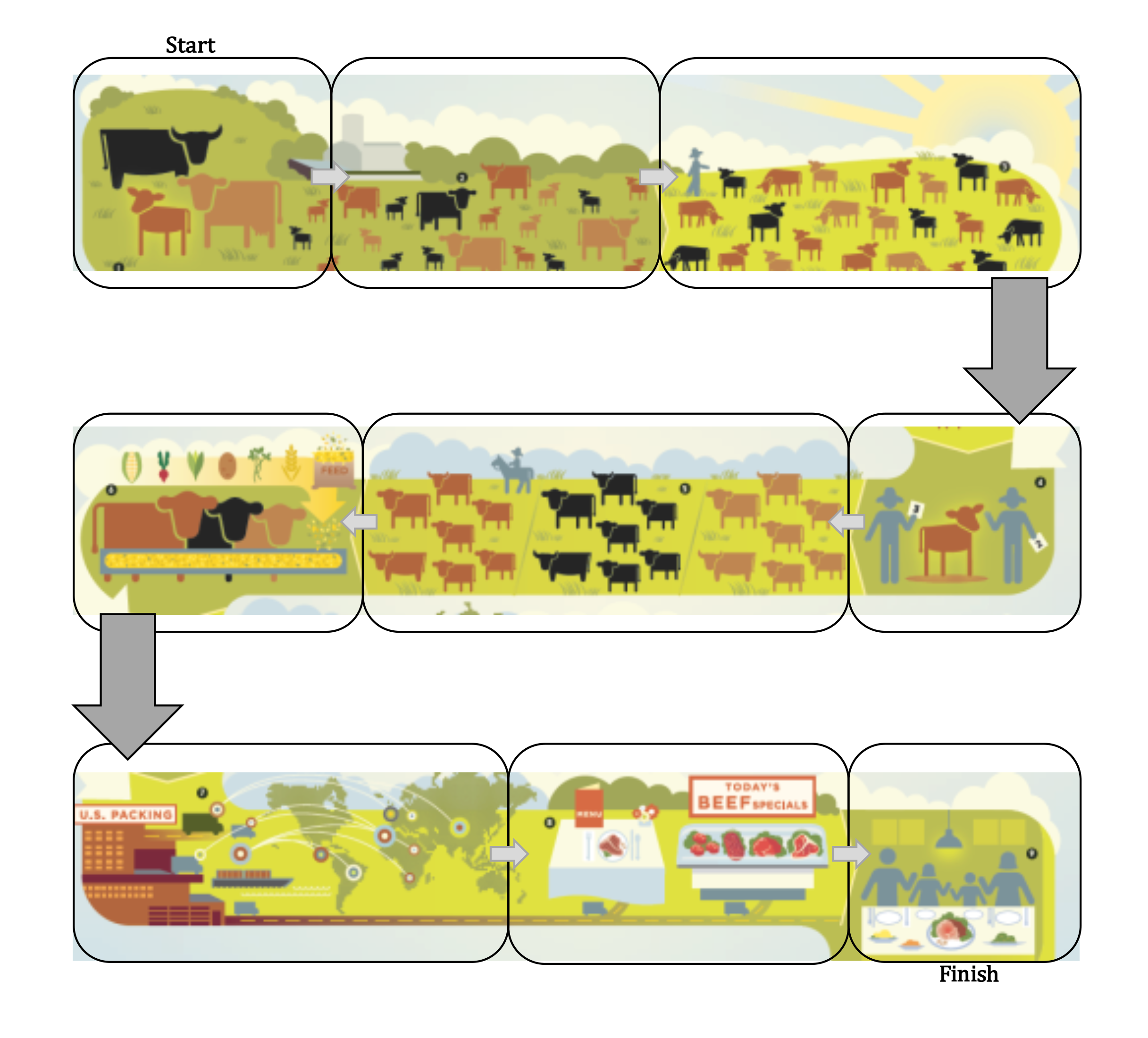Beef From Farm to Fork
Beef cattle grow from young calves to mature steers or heifers in 14-18 months. Calves can be born any month of the year, but spring is the most common season. After a calf is born it will spend the first few months of its life side-by-side with its mother. The calf receives its nutrition from its mother’s milk. As the calf grows, it will also begin to eat grass, hay, or other forages. When the calf reaches six to eight months of age, the calf will be weaned, or separated from its mother. The growing calf will continue to eat grass and other forages as it grows.
Beef cattle typically spend the majority of their lives on private or public rangelands where their diet consists of grass and other forages. For most beef cattle, their final stage of growth takes place at a feedlot where their diet consists mostly of corn and hay which has higher nutrient density than most rangelands. This final stage of growth prepares the animal for harvesting. Once the animal is harvested, it is processed into various meat cuts, such as steak or roast, or processed into hamburger, a form of ground or chopped beef formed into the familiar patty of a hamburger or cheeseburger. The beef is then sold to consumers at a retail outlet, like a grocery store or a restaurant, completing the farm to fork journey.
Cattle Digestion
Along with animals such as goats, sheep, buffalo, deer, elk, giraffes, and camels, cattle have a four compartment stomach. The function of these four compartments allow cattle to physically and chemically digest food that cannot be utilized by humans or animals that only have a simple stomach with one compartment (monogastrics). The ruminant digestive system of cattle actually helps us use feed resources that would otherwise be discarded as waste. These waste products are known as byproducts or incidental products created by the manufacture of something else. An example is a potato peel. French fries are consumed regularly across our country. What happens to all the potato peels? The Ore-Ida French Fry processing plants in Oregon and Idaho send their potato peels to be consumed by cattle in feedlots. The cattle eat the potato peels and convert a waste product into beef, a food rich in zinc, iron, and protein. In summary, humans cannot digest the majority of what cattle eat. They turn something of little value to humans (like grass) into highly nutritious beef.
When properly managed, cattle can also improve the quality and health of the rangelands where they live and graze. Typically, rangelands are located in areas that are too rocky, steep, or otherwise inefficient for growing human food crops. Keeping this land in grass prevents soil erosion. Cattle also provide natural fertilizer for the land in the form of manure.
Careers
The entire farm to fork journey of beef products requires the joint efforts of many different careers. Farmers and ranchers, food processors, and transportation specialists each work with a team of people to produce, process, and transport beef products to be enjoyed by consumers.




